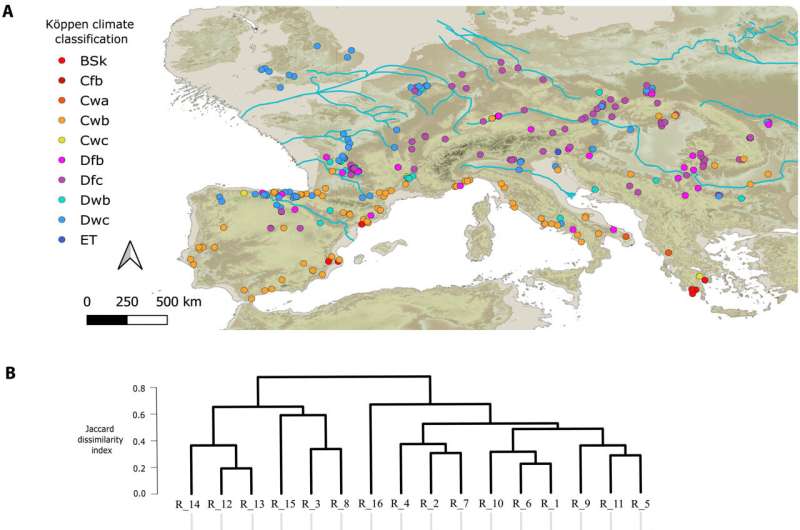September 27, 2023 report
This article has been reviewed according to Science X's editorial process and policies. Editors have highlighted the following attributes while ensuring the content's credibility:
fact-checked
peer-reviewed publication
trusted source
proofread
Neanderthals coexisting with Homo sapiens in Europe likely affected by herbivore carrying capacity

A team of evolutionary scientists at Universidad de Cantabria, in Spain, working with a colleague from Mott MacDonald Ltd., in the U.K., has found evidence that suggests Homo sapiens and Neanderthals tended to coexist for longer periods in Europe in areas where there were a lot of herbivores.
In their study, reported in the journal Science Advances, the group developed techniques to study coexistence between Neanderthals and Homo sapiens in Europe approximately 60,000 years ago.
Prior research has suggested that the arrival of Homo sapiens into Europe spelled doom for Neanderthals, though the details of how that happened remain murky. In this new effort, the researchers found evidence suggesting that the disappearance of Neanderthals during the emergence of Homo sapiens in Europe may have been coincidental.
To learn more about the history of coexistence between Neanderthals and Homo sapiens, the research team built a database about herbivore species living in Europe approximately 60,000 years ago, when both Homo sapiens and Neanderthals were living there. The era was also a time of challenging climate change.
By comparing changes in the climate with regions of Europe, the team created a model that showed which parts of Europe were experiencing more or less challenging climate conditions. Next, they created a chronological listing detailing the timeline of the disappearance of Neanderthals in all the regions they had identified. This allowed them to compare differences in food availability (plants and animals that ate plants) for each of the regions.
The research team found much overlap between where Neanderthals and Homo sapiens were living. Both groups, quite obviously, tended to coexist in those regions where it was easier to find food. Such coexistence, the competitive exclusion principle suggests, should have led to population drops for one or the other, or both, groups.
But according to existing data, such declines did not occur. In fact, it was the opposite—Neanderthals tended to persist longest in regions where they were coexisting with Homo sapiens. This finding suggests a still unknown reason for the decline and disappearance of the Neanderthals.
More information: Marco Vidal-Cordasco et al, Neanderthal coexistence with Homo sapiens in Europe was affected by herbivore carrying capacity, Science Advances (2023). DOI: 10.1126/sciadv.adi4099
Journal information: Science Advances
© 2023 Science X Network


















